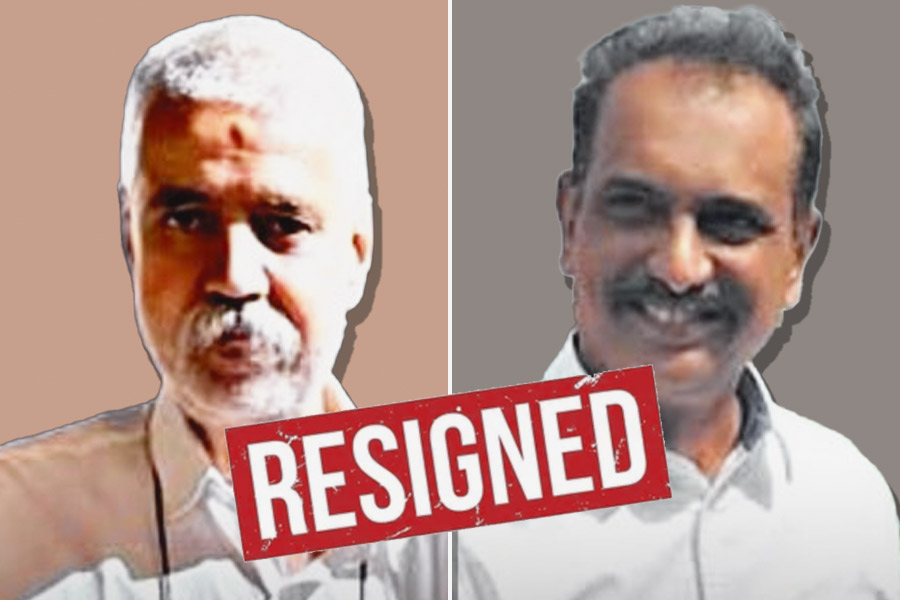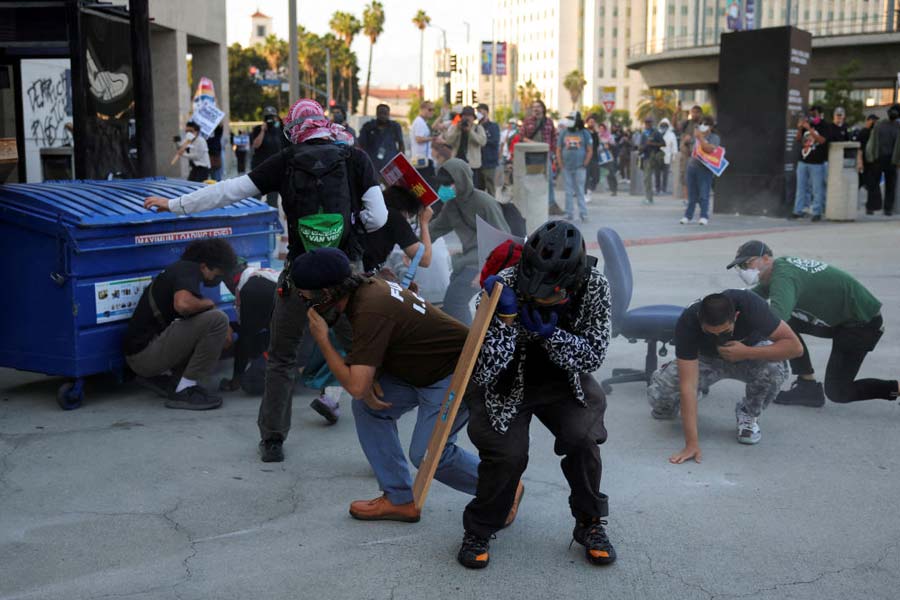|
|
| Suspended interest |
THE LOST SYMBOL By DAN BROWN, Bantam, Rs 699
If there is any truth in the saying that most people have one good book inside them, then Dan Brown can be said to have finished his quota with The Da Vinci Code. That book despite its farfetchedness had a refreshing and gripping quality. The new novel stretches the reader’s credulity to beyond breaking point: the willing suspension of disbelief cannot be willed any further.
Dan Brown abandons the secrets of the Roman Catholic Church to pursue the secret world of the Freemasons who are known as an esoteric group whose members follow strange rituals and customs. The world of freemasonry is full of codes and signs. It is a world-tailor made for the entry of Robert Langdon, Brown’s hero from his previous books, Harvard professor and one of the leading experts in ancient symbols and arcane practices.
Peter Solomon, an old friend and mentor, who is immensely wealthy and powerful, summons Langdon to Washington DC to deliver a very prestigious lecture in the Capitol Building at very short notice. On arrival Langdon finds that he has been made the subject of an elaborate and dangerous hoax. Peter Solomon has actually been kidnapped, his left hand severed and this has been used as a sign (which Langdon can decipher) that Langdon has to follow if he is to save Solomon’s life.
The CIA’s Office of Security (OS) is already, much to Langdon’s astonishment, interested in the matter. The OS, Brown assures readers, actually exists: it monitors “all CIA employees for illicit behaviour: misappropriation of funds, selling of secrets, stealing classified technologies, and use of illegal torture tactics, to name a few.” Its sole purpose is to spy on America’s spies.
Both Langdon and the head of CIA’s OS are convinced that they are up against a resourceful fanatic. What they don’t know is what he wants. A kind of chase and a race against time follows. The chase is twofold. One is to reach the fanatic and the other is the OS’s pursuit of Langdon. The latter’s priority is to save his friend, Solomon. The head of the OS is concerned with national security for which, if need be, Solomon can be sacrificed.
The chase takes Langdon behind and underneath the imposing buildings of Washington DC: to hidden chambers and corridors, tunnels and temples. Suddenly to Langdon, and therefore for the readers too, well known structures become repositories of dark secrets, all relating to Freemasons. The familiar acquires bizarre dimensions and when Langdon explains them they all seem very obvious.
The story unfolds through too many improbable events. One of them involves the “murder” of Langdon by drowning. He is given up as dead. But how can the hero —and in one sense the detective — die? So Langdon is saved miraculously. So is Peter Solomon, despite a severed hand and with no medical attention for over 24 hours.
The novel ends with Langdon atop the Capitol Rotunda: “As the sun rose over Washington,… Langdon thought about science, about faith, about man. He thought about how every culture, in every country, in every time, had shared one thing. We all had the Creator…Robert Langdon felt a powerful upwelling deep within himself. It was an emotion he had never felt this profoundly in his entire life. Hope.”
Langdon is never good with endings. But this bids high in the auction of banality.
There is however in the middle of the narrative this nugget of gold: “Since the days of Michelangelo, sculptors had been hiding the flaws in their work by smearing hot wax into the cracks and then dabbing the wax with stone dust. The method was considered cheating, and therefore, any sculpture ‘without wax’ — literally sine cera — was considered a ‘sincere’ piece of art. The phrase stuck. To this day we still sign our letters ‘sincerely’ as a promise that we have written ‘without wax’ and that our words are true.” Let us hope Dan Brown has written sine cera.












